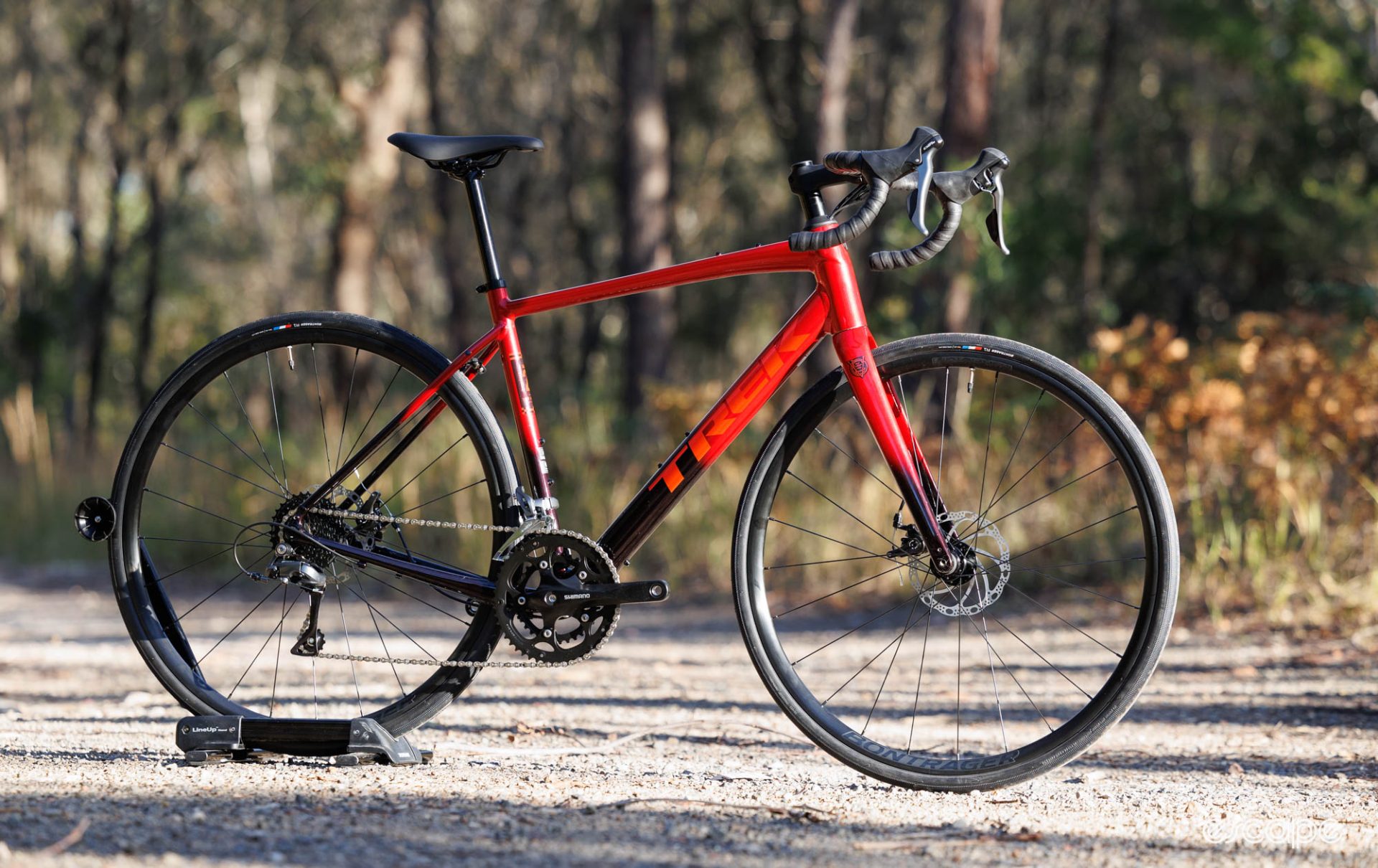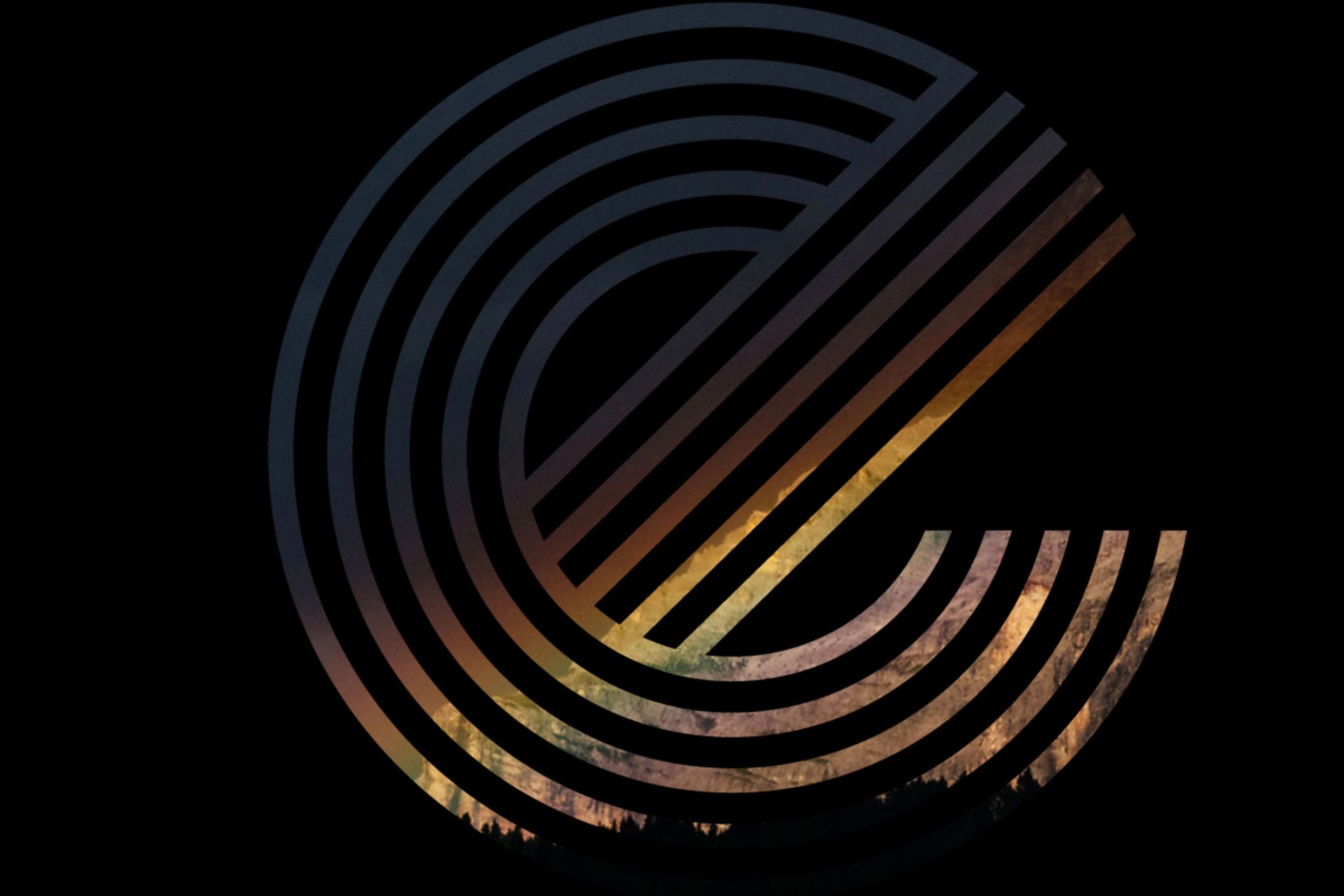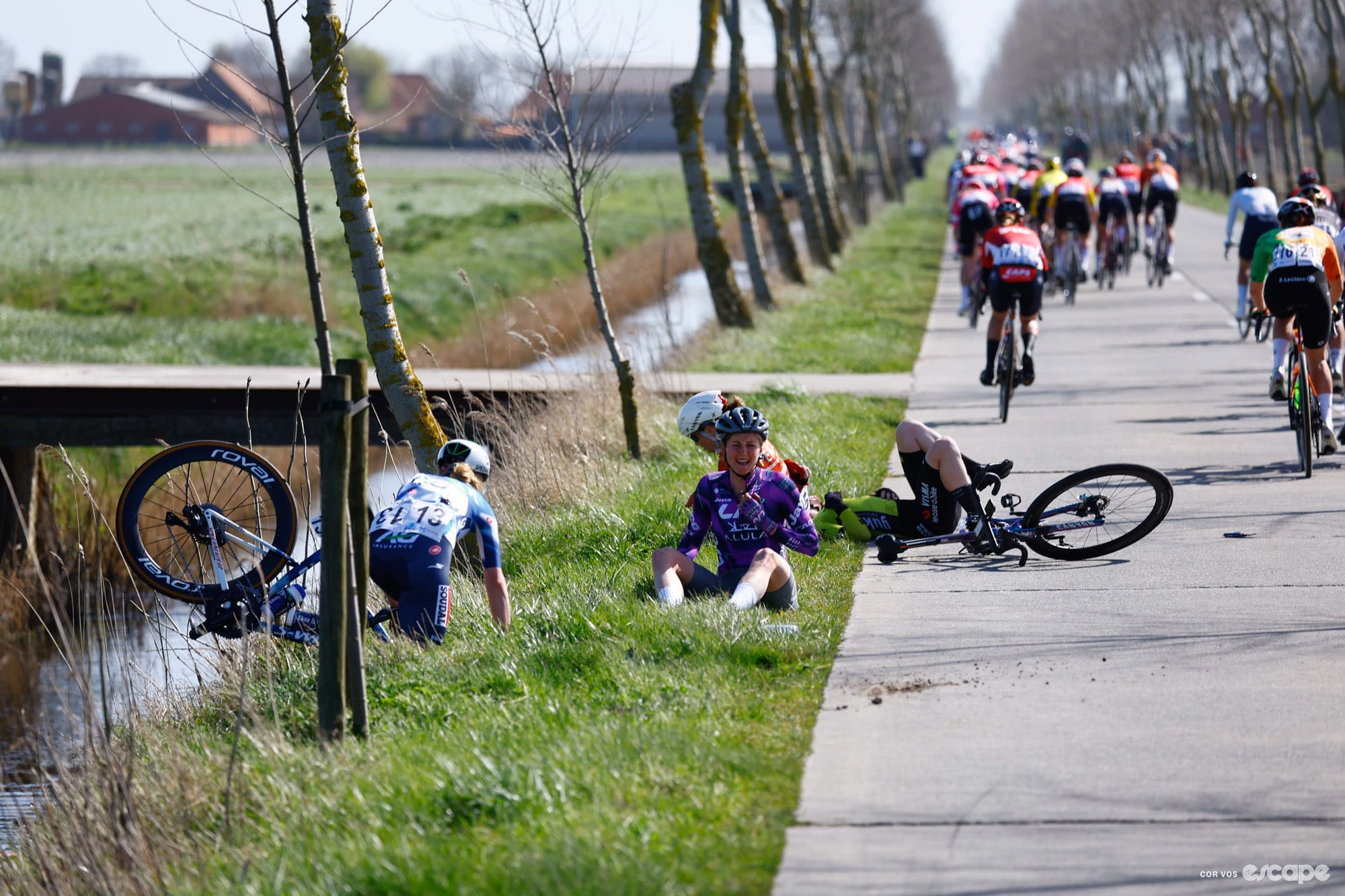As a tech editor, I’m often more excited to test entry-level bikes than those with sky-high prices. Sure, a 7 kg superbike built with scrap from a space program (not really) is a hoot to ride, but it’s the balance of budget and function that intrigues me so much more about the lower end.
Here, the assumption is often that those new to cycling will start with such a lower-cost bike. These bikes can make or break the future growth of cycling, and my hope is that the person buying such a bike has a positive experience that encourages them to stick around the sport we love so much.
That’s where the Trek Domane AL comes in. I tested the previous iteration (released for 2021) and found it to be one of the best entry-level road bikes available. It offered a welcoming fit and confident handling without feeling dull. It provided ample tyre clearance to be used as either a road bike or light gravel bike. It was simple to keep well-tuned. Most importantly, it was an entry-level bike that I truly enjoyed riding.
And that brings us to the latest iteration of Trek’s best-selling road bike. On paper, the new fourth-generation Domane Al retains a lot of what I liked in its predecessor, but it, of course, introduces a few new twists to the proven recipe. This is a solid bike, but as you’ll read, it fails to impress like the previous version.
Good stuff: Room for 40 mm tyres has this one ready for the gravel-curious. Solid build kit and frame will shrug off loaded commuting and mixed surfaces. Ready for fenders and a rack. Welcoming geometry and comfortable touch points.
Bad stuff: Disc brakes make for a heavy bike, and the mechanical disc brakes here aren't stellar. Heavy wheels and tyres make the bike feel more sluggish than it wants to be. Through-headset cable routing makes no sense on a bike with mechanical gears and brakes. Ultimately cheap gearing and brakes for a bike that, while Trek's entry-level, isn't as affordable as it should be.
The new Domane Al explained
In its modern form, the Domane Al is a dropbar bike that blurs the line between being an endurance road and an all-road bike - the latter being a category of bike that is designed with the versatility to split its time across tarmac and well-kept gravel roads. And with official room to easily clear 38 mm tyres (I comfortably fit measured 41 mm rubber in my sample), it certainly has the tyre clearance to go off-road. Still, look to the gearing and geometry, and it’s clear Trek still intends this one first and foremost for those wanting a road bike (get a gravel bike if your ambitions are predominately focused on riding off-road).


As Trek’s most affordable road offering, the Domane Al offers a base-level aluminium frame (100 series Alpha in Trek speak) with a handful of more premium features. Many of the tubes are formed into angular shapes to handle specific forces and/or offer a unique aesthetic flourish. For example, the top tube tapers from matching the oversized head tube to that of the comparatively slender seat tube. Meanwhile, the oversized down tube is anything but round in its profile.
Shapes aside, the most obvious new fancy feature is seen with the oversized headset bearings that now house four gear/brake housings within it which are then fed into the aluminium frame or full carbon fork. That full carbon fork on all price points of the Domane AL is new, too, included in an effort to save weight.
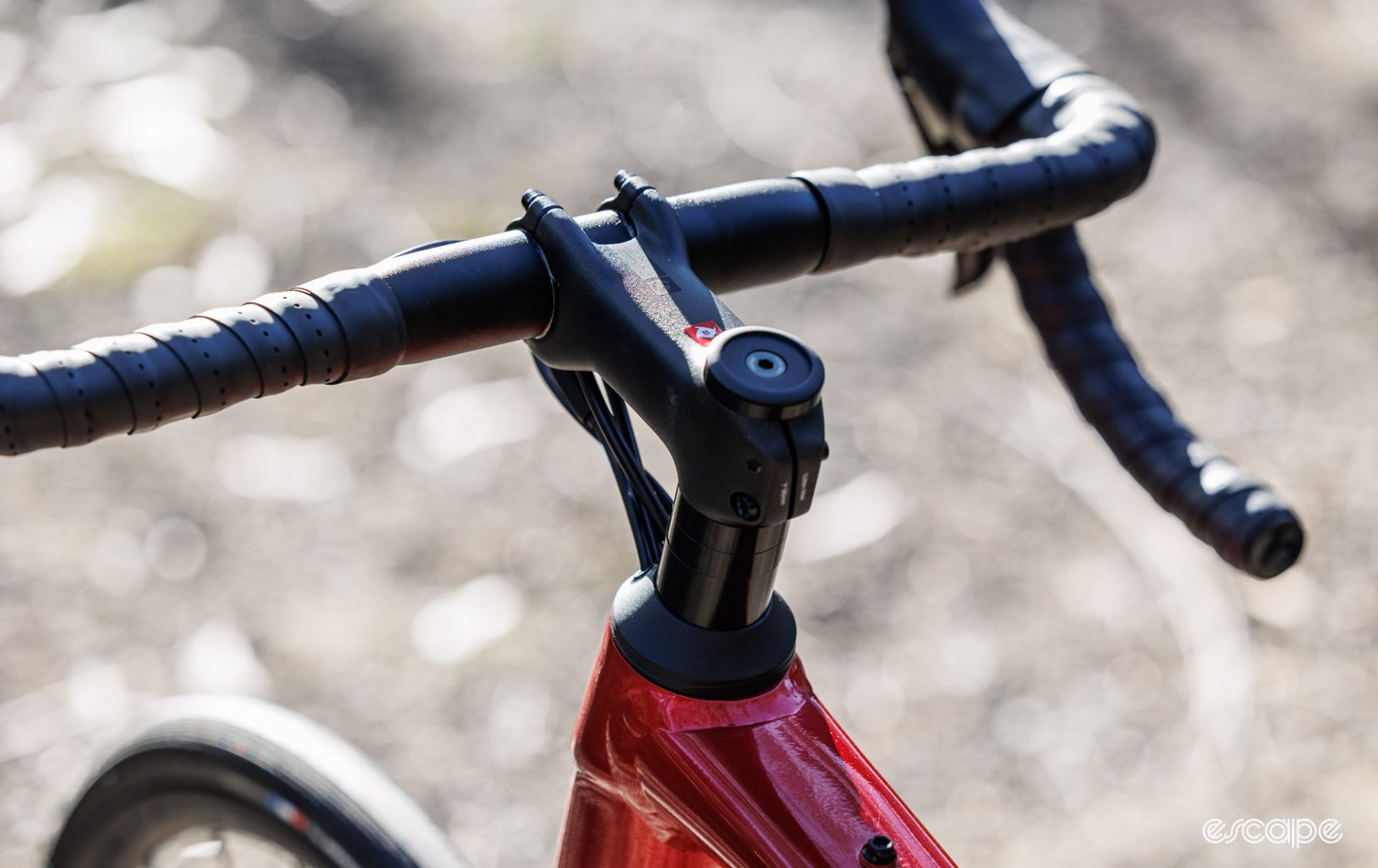
With such generous tyre clearance, the frame has room and provision for full-length fenders (via a removable seatstay bridge) – with them installed, you’ll still comfortably fit 35 mm rubber. There are mounts for a top tube bag, and a third bottle cage can be mounted on the underside of the down tube.
Component fitments are kept joyfully regular with an English threaded bottom bracket shell, a 27.2 mm seatpost, an external seatpost clamp, and flat mount brake calipers. And in a first for Trek, and perhaps a first for a road bike of this price point, there’s a Universal Derailleur Hanger (UDH) – a now-standard concept from the mountain bike world that not only ensures you can buy a replacement derailleur hanger anywhere, it also means the frame is ready for newer T-mount type derailleurs (first seen with SRAM Eagle Transmission).
However, there is one exception to easy component fitments, and that’s the cable routing through the headset – I’ll return to this.

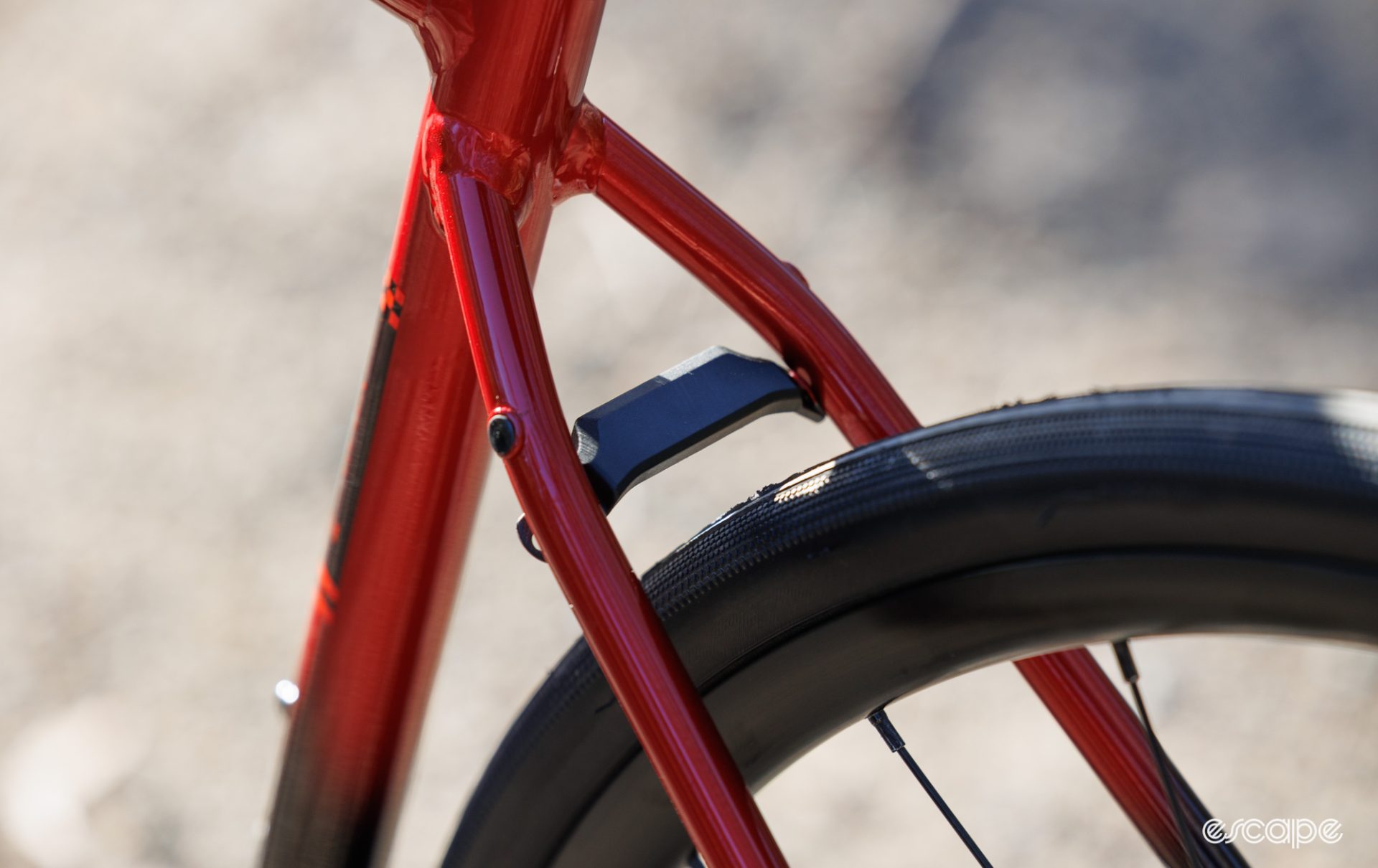
More quality features include a small adjustable chain-catcher that's ready in case of a shifting mishap. And then the provided thru-axles offer a nice conical interface, with a removable handle that contains a 4 mm hex key for use across the bike (for adjusting bars, seatpost, etc.)
I’m happy to say that Trek has made no changes to the geometry since the previous iteration. Across the seven sizes, the Domane AL is intended to put the rider in a more relaxed position than a race bike. The bike also balances a longer wheelbase for stability with relatively quick steering angles to keep it feeling zoomy (61 mm trail figure in a 54 cm with 32 mm tyres). And as Trek has done with Domane for a number of years, the bike sits comparatively low to the ground with a 80 mm bottom bracket drop in the assumption you’ll be running larger-volume tyres (32 mm as stock).

If the parts dangling off it weren't enough proof that this bike exists to hit a certain price point, then its weight certainly offers that confirmation. A 56 cm frame is quoted to weigh 1,518 g, while the matching carbon fork sits at 475 g. All told, the base-model Domane AL 2, as tested, strained my scales at 10.42 kg without pedals or cages, and while that’s far from light, it does shave about 200 g off its predecessor.
As tested, the base-model Domane AL 2 (US$1,200 / €1,200 / £1,125 / AUD$2,000) is built with a mix of Shimano’s entry-level Claris components and a few even cheaper non-series bits for a 2x8 gearing setup. The Tektro disc brakes are of the mechanical kind with a design that pulls both brake pads simultaneously to clamp onto the disc rotor (a design concept shared with the more premium TRP Spyre brake). Meanwhile, Trek’s componentry house brand, Bontrager, is responsible for all the other pieces, including a gravel-inspired handlebar with a subtle amount of flare, a well-padded and welcoming short-nose saddle, and a simple but effective twin bolt alloy seatpost.
Potholes will be fearful of being hit by the Paradigm SL wheels, and the Bontrager R1 Hard-Case Lite wire-bead tyres that are ready to ride through a river of broken glass bottles. The build may be heavy, but it’ll take more knocks than a door.

Step up to the Domane AL 4 at US$1,700 / €2,000 / £1,875 / AU$N/A and you’ll see the bike get a welcome upgrade to Shimano Tiagra 2x10 shifting and matching hydraulic disc brakes. Meanwhile, all the other bits are the same as the base model. This is the model I tested in the previous iteration and the one I sought to test again. Alas, it’s unfortunately not offered within the small island of Australia. As I’ll come to explain, this one is worth the extra expense if it’s available in your region.
Finally, spending US$2,000 / €2,300 / £2,150 / AU$N/A gets you the Domane AL 5. This top-tier option has Shimano’s new 105 12-speed mechanical groupset, while the rest remains the same as above.
Handling and versatility
Riding the Domane AL is a familiar and welcoming experience. Straight from the box, it offers a comparatively upright but not cramped riding position, and it can be easily (and cheaply!) tuned to offer a more leisurely or aggressive fit.
The stock stem length (100 mm in the size tested) and new 80 mm reach handlebar left me without complaint, but my initial impressions were that it made the reach feel longer than expected, especially given how upright the position otherwise is. Those wanting a truly relaxed ride may need to swap out to a shorter stem length, while those wanting a truer road bike experience can use the 45 mm of stem spacers provided for fine-tuning the stem height.
I found my 54 cm Domane AL sample handled best with the handlebars lowered by 25 mm (lower handlebar height helps to put more weight on the front tyre and lowers your centre of gravity), however, what fits you best should be the priority.
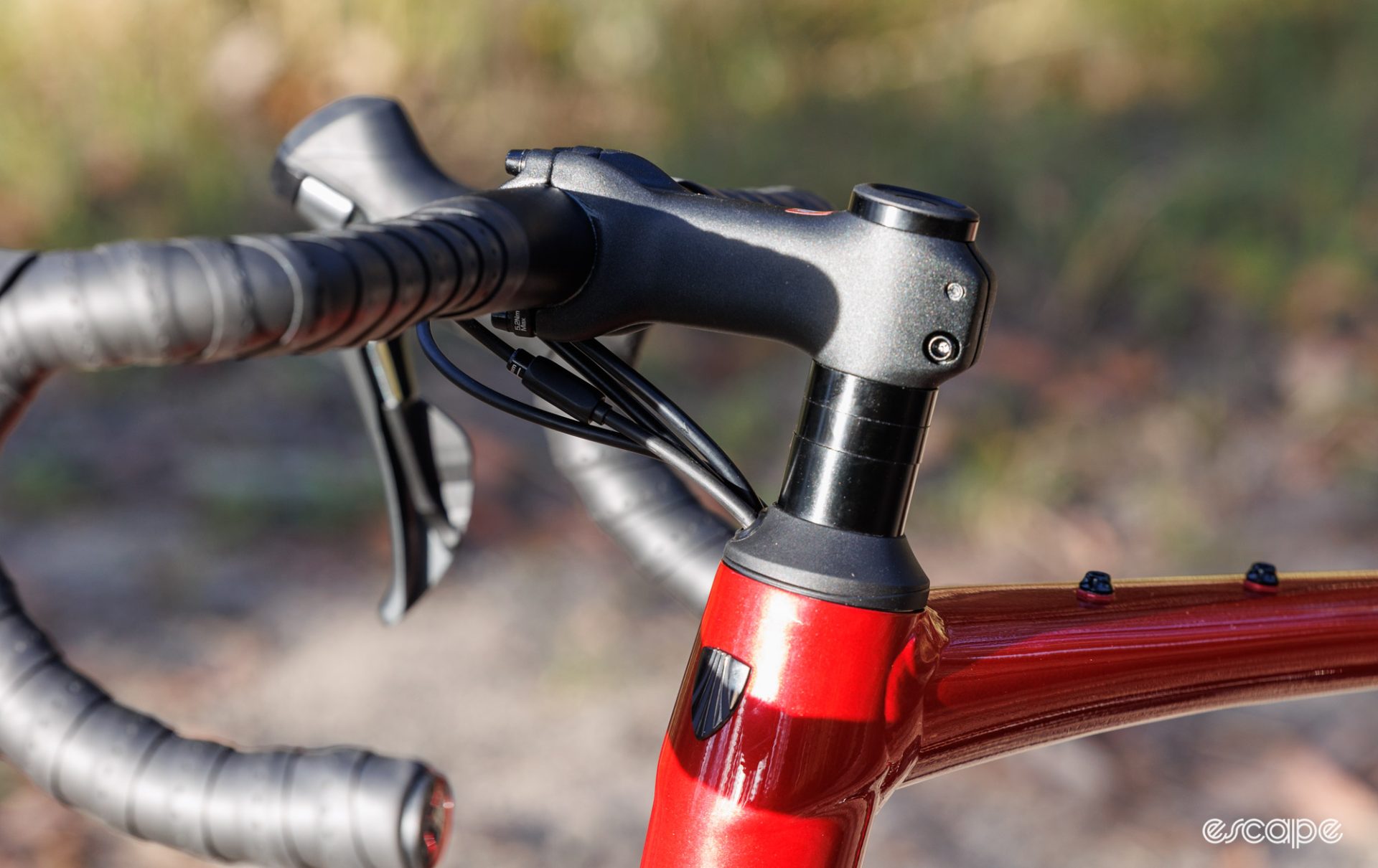
Either way, the Domane AL fits the way an endurance-type road bike should, and it’s a far more inviting experience for newer riders than bikes that try to mimic pure race bike geometry. It’s a fit that should have mountain bikers feeling at home, and likewise for those fresh to cycling.
It’s easy to make a road bike stable, but make it too stable and the bike can become dull to corner with and a little lifeless in finding a rewarding flow. Trek’s proven geometry figures strike a nice balance between easy-riding stability and reactivity. The Domane AL has a longer wheelbase and slacker head angle to ensure it's not nervous like a race bike, but then, a longer fork offset helps to reduce the trail figure for a ride that remains rewarding to dip into high-speed corners.
In reviews, we often cover the ride quality of a frame (basically, how smooth the bike feels). The Domane AL is by no means a rattle-can like aluminium bikes of the distant past, but equally, its relatively basic tubing does mean you’ll feel the edge of larger bumps. However, so much of how this bike rides and handles is seemingly intertwined with the stock wheel and tyre setup, something I cover in the following section.
As a budget offering, you can expect this bike to lack the same level of polish as more premium options. The welds are fairly consistent but aren’t made to look pretty. Likewise, the candy red paint (a black/grey option also exists) offers a premium look, but closer inspection shows it lacks a mirror polish. And then, every time I looked at the crooked Domane logo on the top tube I was further reminded that this was Trek’s budget offering.
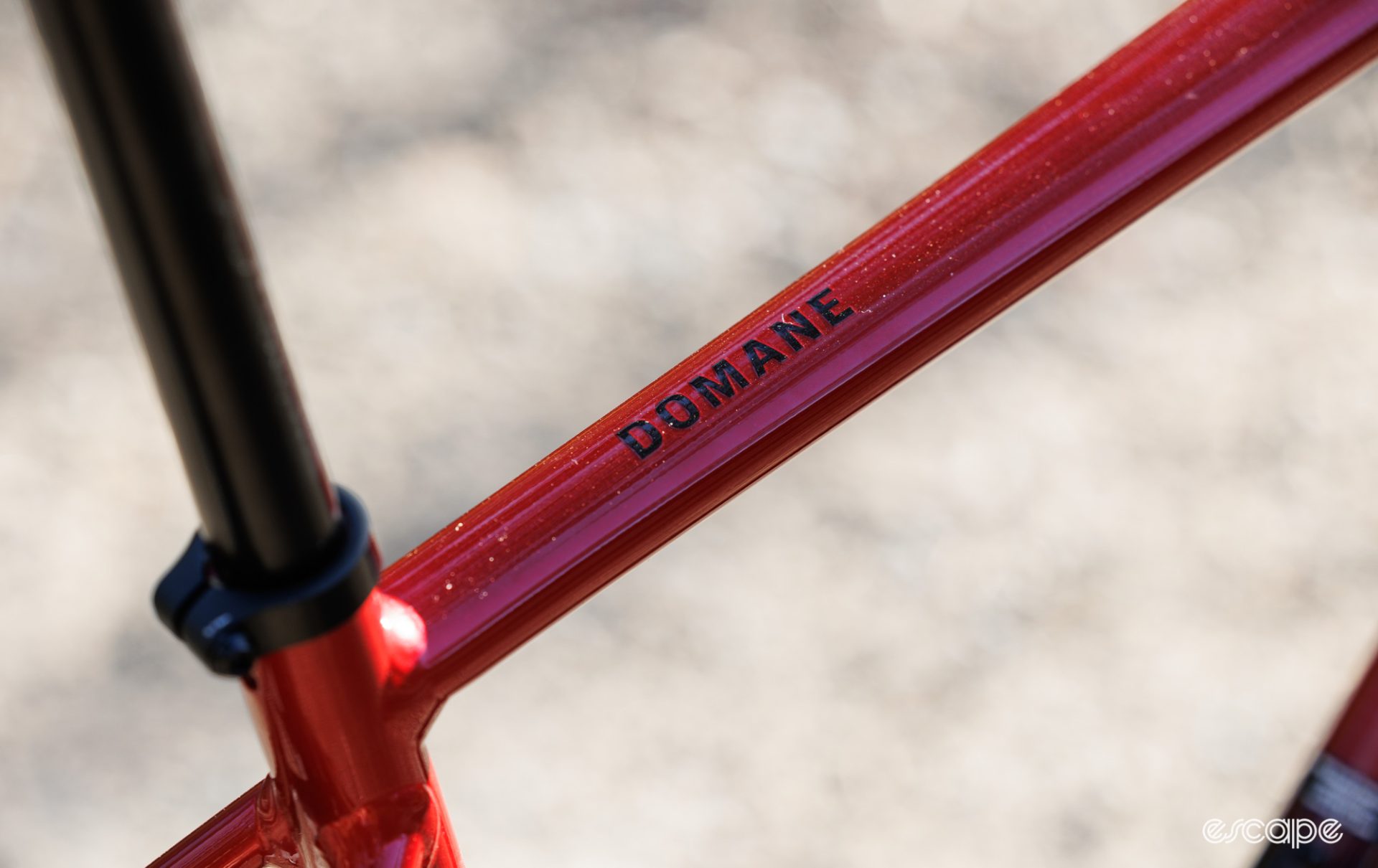
Regardless of how it rides, the Domane AL is certainly robust enough for thumping down a gravel road. Likewise, the room for actual 40 mm tyres means you can equip it for proper off-road use. However, like many road-going bikes, that larger tyre makes the gearing taller (harder), and therefore you’ll probably be wishing for easier gearing on loose steep climbs. Similarly, the frame geometry isn’t ideally optimised for such big rubber, and at least for smaller sizes, you’ll be hitting your toes against a wider front tyre (aka toe overlap) when turning at low speeds. Thankfully, no such toe overlap issues were present with the stock 32 mm tyres in the tested size 54 cm.
When weight matters
Physics tells us that the bike's weight often makes a negligible difference to one’s speed. Still, one of the joys of a pure road bike is the whippy and reactive sensations earned through a light bike, and while it may not result in a huge difference in the Strava rankings, it sure can make a difference in how big of a grin you carry up the hill.
It’s here where the Domane AL and its excess mass tend to disappoint. There’s no other way to put it, but in its stock form this bike just feels sluggish and hesitant to move. No doubt the basis for such blame comes from the disc brakes, a complaint that my colleague Caley Fretz recently articulated with his review of the more race-orientated Trek Emonda ALR. I won’t repeat that rant, but disc brakes carry increased cost and increased weight, and in an effort to save money, there's an even bigger trade-off in the weight. However, this is an increasingly pointless argument as rim brake bikes become forever harder to find, and when you do find them, you can bet you'll be limited to a far narrower tyre width.
OK, so the new Domane Al is only available with disc brakes and that’s absolutely not going to change. Plus, those disc brakes are why this bike can fit gravel-sized tyres. Thankfully there is good news here as so much of this slug-like-biomimicry is simply related to the provided tyres and wheels.
Weight is one negative to the stock Bontrager Paradigm SL wheels. Although more obvious was the penalty in rolling resistance and ride quality from the Bontrager R1 Hard-Case Lite wire-bead tyres (quoted and measured at 32 mm). Here, the provided tyres and wheels have the bike feeling more like an urban commuter than a sporty road bike, and one riding friend remarked that they noticed how suddenly slow(er) I was while testing this bike!
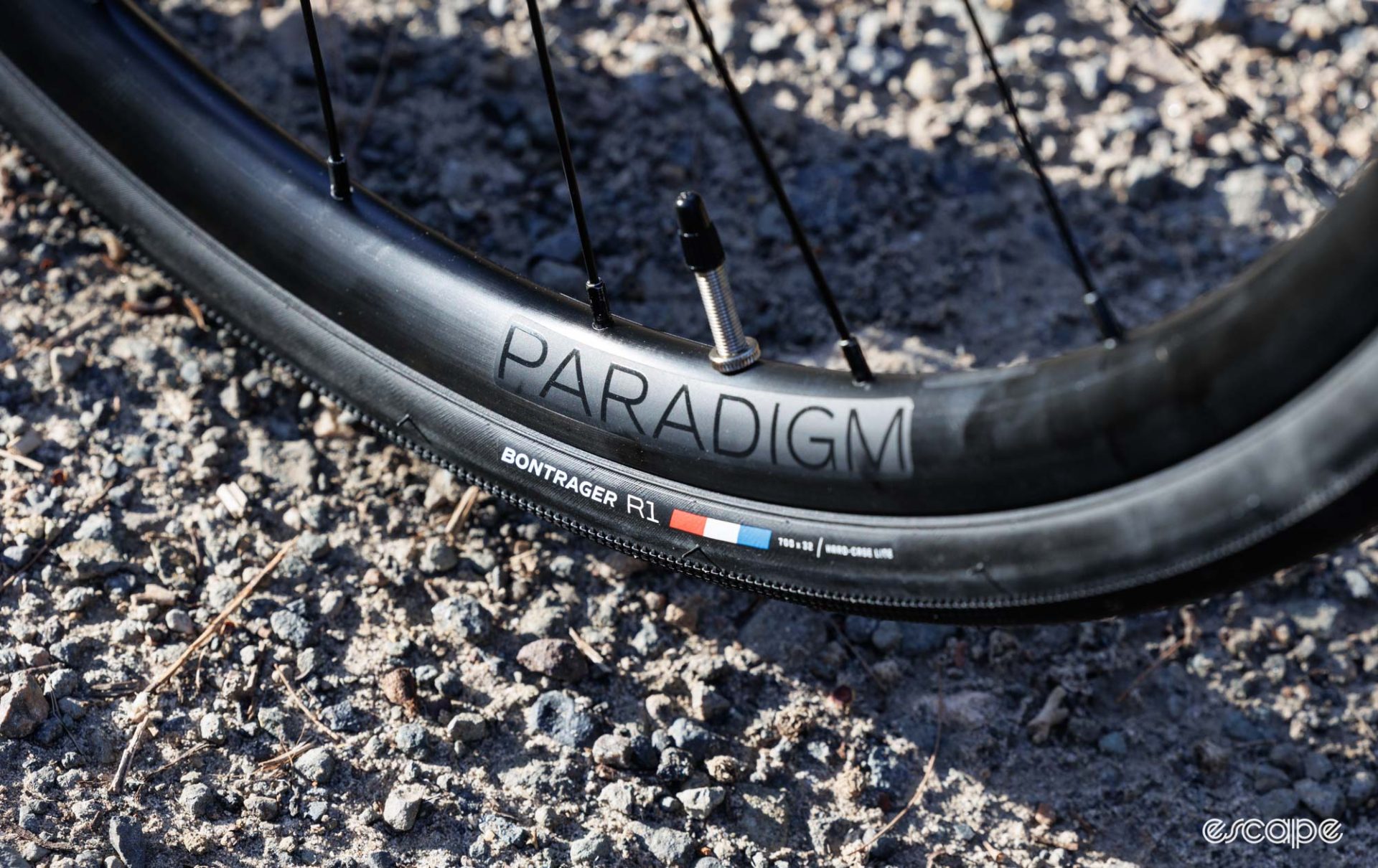
Swapping the wheels to some mid-priced Shimano 105 carbon wheels and performance-type 28 mm road tyres dropped an entire kilogram from the bike. More obvious than the weight was the night-and-day difference in the ride quality and rolling resistance. Suddenly the Domane Al felt like a road bike should – it was reactive to input and didn’t slow as noticeably when the road inclined. Equally, the wooden ride quality caused by the stiff tyres was now softened, resulting in a ride that simply felt smoother for an equivalent tyre pressure.
Spending the value of a bike on wheels and tyres will of course always transform the ride. It’s often the best upgrade you can do to any bike, and that’s no different here. Even if the budget doesn’t allow for new wheels, changing from the stock 470-gram wire-bead tyres to a more performance-oriented folding tyre will significantly improve your average speed and feel on the bike.
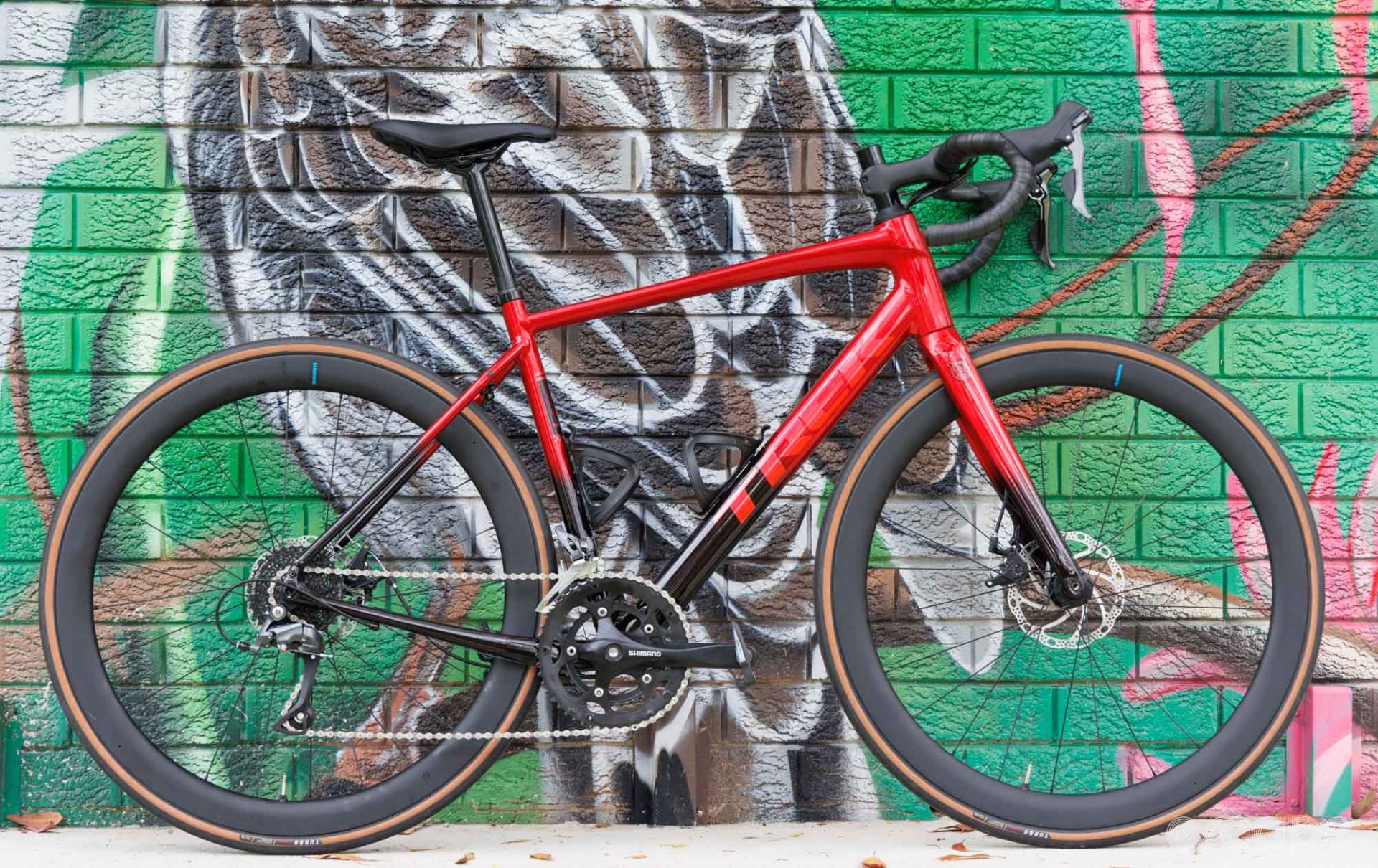
Now the stock wheels and tyres hold back the bike from being the road bike the Domane AL wants to be, but there are customers who they’re well suited for - notably commuters. Those with aspirations of riding to work during the week and enjoying the sights on the weekend will be well served by the stock wheels and tyres, just don’t expect to ride efficiently with them.
Shifting, braking, and internal guidance
Testing such budget bike models is always interesting – sometimes they pleasantly surprise me, other times I’m left wondering about particular specification choices. For the Domane AL 2, it’s a mix of both.
Sitting below Sora, the Shimano Claris shifting is Shimano’s most budget dropbar option to earn an actual model name. If you were to compare it to Shimano's mountain bike groupsets, you'd be looking at what used to be Acera (now replaced by CUES). It’s so budget, in fact, that Shimano only offers it in a mechanical brake configuration where it can be connected to rim brakes or as seen here, mechanical disc brakes.
With both brake pads simultaneously clamping onto the disc rotor, in theory, the provided brakes are pretty good amongst a sea of ever-cheaper mechanical options. However, in practice, I was reminded once again just how stubborn the stock pads and rotor are to bed in for full power. The brakes were downright dangerous for the first 30 minutes of riding, and even once fully bedded in, the power was more comparable to a rim brake than a hydraulic disc brake system.
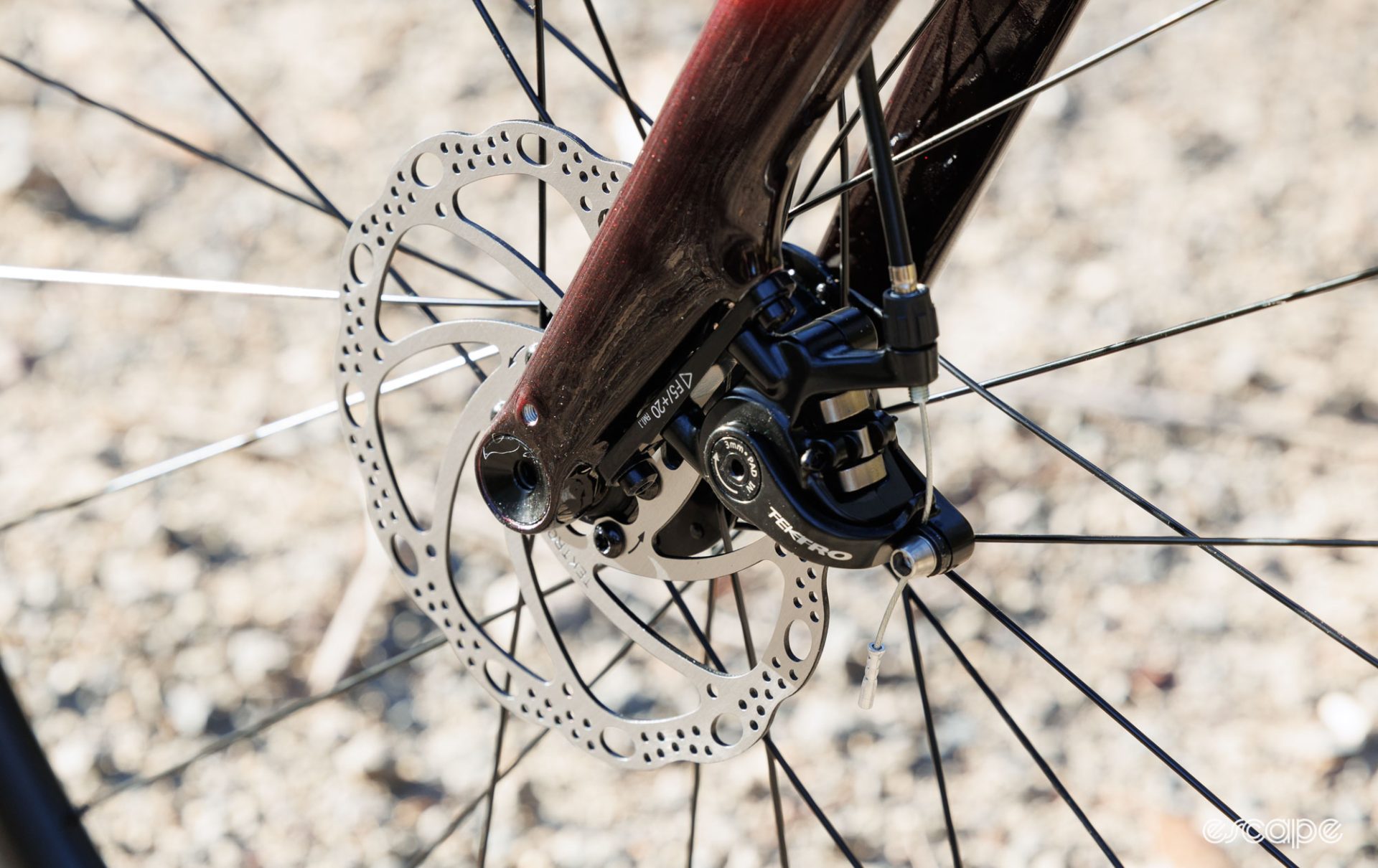
While the braking power isn’t great, the Claris brake hoods are at least comfortable to hold. That’s a nice change from what the cheapest stuff used to feel like. Meanwhile, the shifting never failed to find the desired cog, but in doing so, it lacks the smoothness of Shimano’s 10-, 11-, and 12-speed shifting systems. The bigger bother was the square taper crankset that was flexy enough for me to hear the chain rub against the front derailleur when riding out of the saddle.
Related, I found myself out of the saddle more often as the combination of the compact (50/34T) front gearing and 11-32T cassette don’t provide quite low enough gearing given the sheer weight of the bike and the larger 32 mm tyres. Adding salt to the wound, this gearing will only become a bigger issue if you choose to increase the tyre size further.
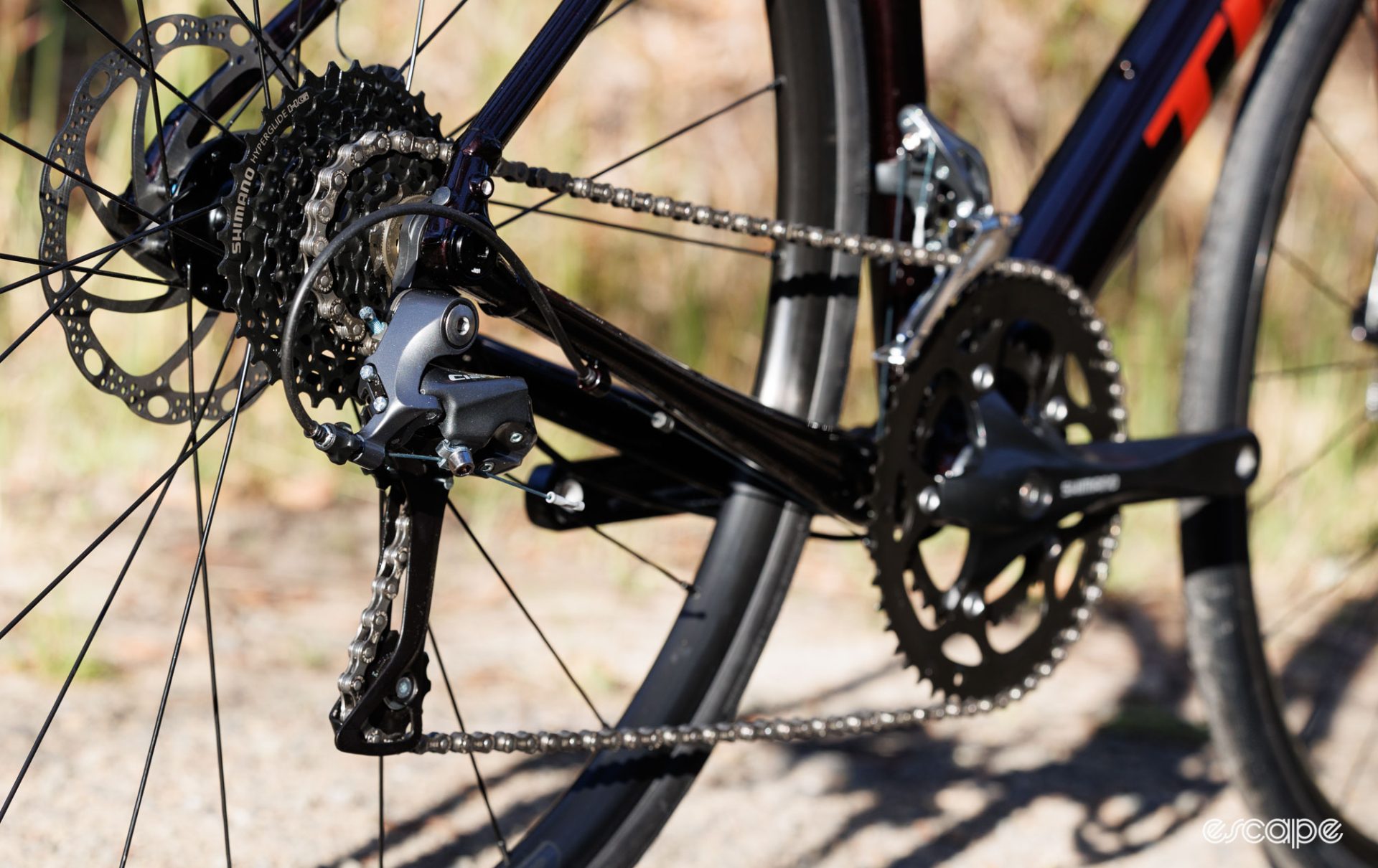
One of our growing complaints with many modern road bikes is that the ever-increasing integration of components and hiding of cables has brought great complications to tuning how a bike fits and how easily it is serviced. Here, Trek at least gets the former right.
The Domane AL now hides the cables through the headset but thankfully not through the handlebar or stem. As a result, there are no limitations or barriers to adjusting the height of the handlebars, the length of the stem, or the position of the saddle. All this stuff remains traditional and simple to swap and change - no advanced mechanical know-how or specialist tools are required. This semi-concealed design also means you can still box the bike for travel without much of a hiccup. Even better is that you’re unlikely to need to make any component changes as the provided parts offer a comfortable position straight from the box.
OK, so that concealed cabling may look nice (that’s fundamentally its core purpose), but it absolutely introduces future servicing complications. Changing brake or gear outer cables is certainly more of a fiddle, but hardly a stress compared to the nightmare that will be incurred if you were to ever wear out or rust away a headset bearing that the fork steers on. Here, all the gear cables and brake cables will need to be disconnected (and likely replaced) along with the bartape in order to swap that simple bearing – a service that is likely to cost at least an extra hour of professional labour.
Worse yet, the bearing durability is now compromised because the elements are welcome to enter through the holes for the brake and gear cables. Indeed a sweaty session on the indoor trainer or a soggy ride out on a gravel road will see contaminants begin to reach the final seals of those bearings.
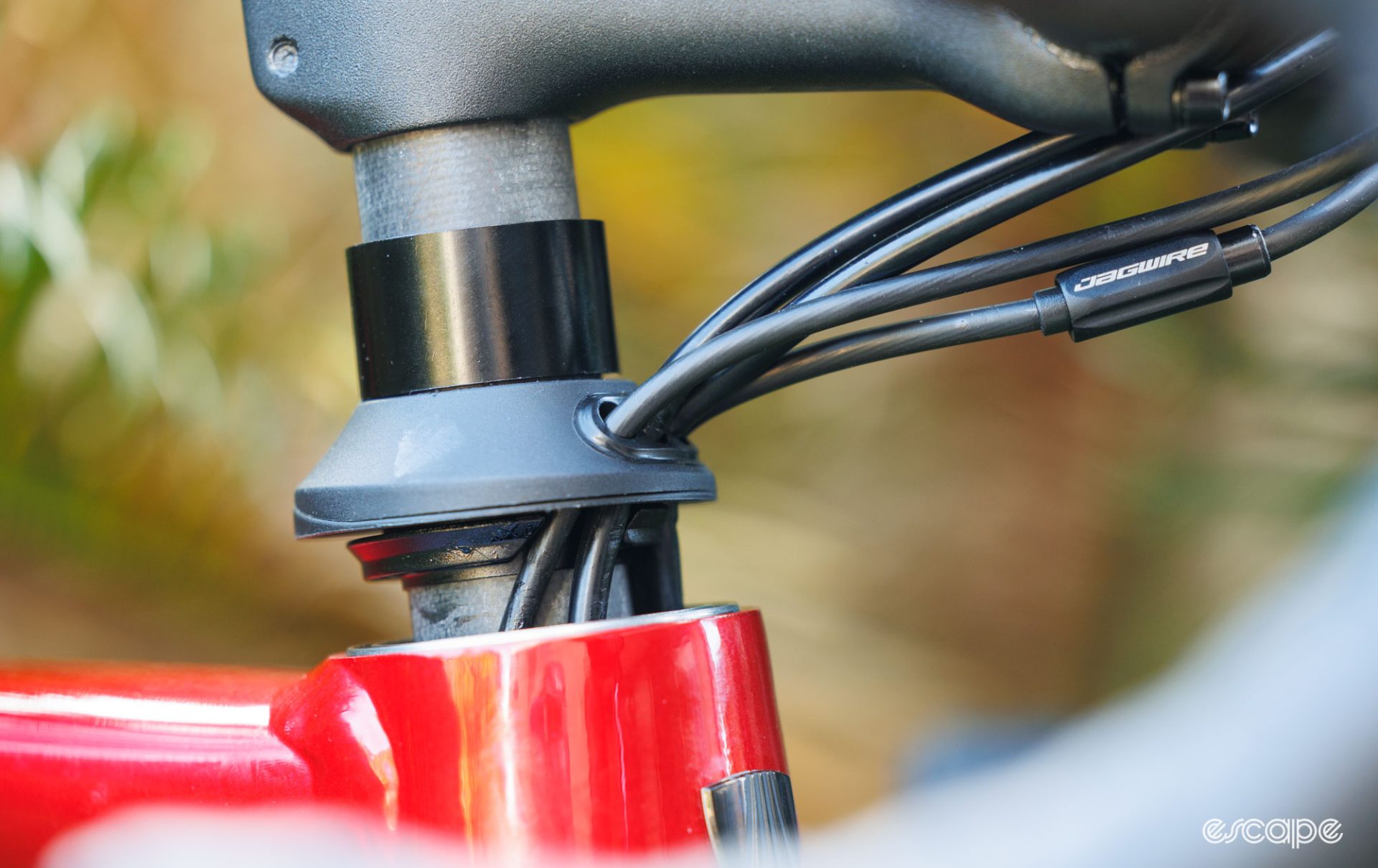
All of this is to say that I strongly believe clean aesthetics is not enough reason for brands to utilise concealed cabling on entry-level bikes – a complaint not at all exclusive to Trek. These lower-cost bikes don’t have wireless electronic gears, but rather still use mechanical gears that need smooth paths for the cables to flow. Meanwhile, the bike tested also has steel cables for the brakes, and you can bet that the marginally increased lengths of required cabling come at the cost of increased friction, greater cable compression, and therefore reduced brake efficiency. Hydraulic disc brakes help a lot here, but even then, you still have mechanical shift cables to weave.
So what’s the answer? Well, you’re locked into this with the new Domane Al. It’s the one thing I think is an obvious (and significant) downgrade from the previous iteration of the Domane AL. And it’s one area where I think the new Specialized Allez Sport keeps things more practically modest (well worth consideration at this price point). Unfortunately for many at this price point, the effort of making such budget bikes look more premium comes at a practical cost, and Trek is joined by the likes of Orbea, Scott, and an increasing number of others in this trend.


The wrap
Modern bicycles have improved in so many ways. The durability is impressive. The ability to run wide tyres for mixed terrain removes limitations of where and how you can ride your own bike. And no doubt, bikes are more ergonomic and better for the body than before.
Still, I look at the combination of disc brakes and concealed cabling on a bike built with Shimano’s most entry-level gearing and can’t help but think how much better this bike could be if it had an even simpler frame and a decent rim brake. The braking would be comparable, it would be far lighter, and it would either be significantly cheaper or better equipped.
Again, that’s not a complaint unique to Trek, but the base-model Domane AL 2 is a prime example of a bike that arguably lacks value where it matters. Indeed it’s a good bike in many aspects, but it carries a hefty asking price for a bike running shifting parts that previously came with bikes costing half as much just a handful of years ago.
Spending more for the Shimano Tiagra-equipped Domane AL 4 immediately solves all of my issues related to the brakes and shifting. Still, it doesn’t solve for the sluggish tyres and increased complexity of the through-headset cable routing. Either way, if you do decide a Trek Domane AL is right for you, then just know that you’ll be at a speed disadvantage until you at least change the tyres. And as with any bike with through-headset cable routing, be prepared for bigger service bills through the ownership of such a bike.
Gallery
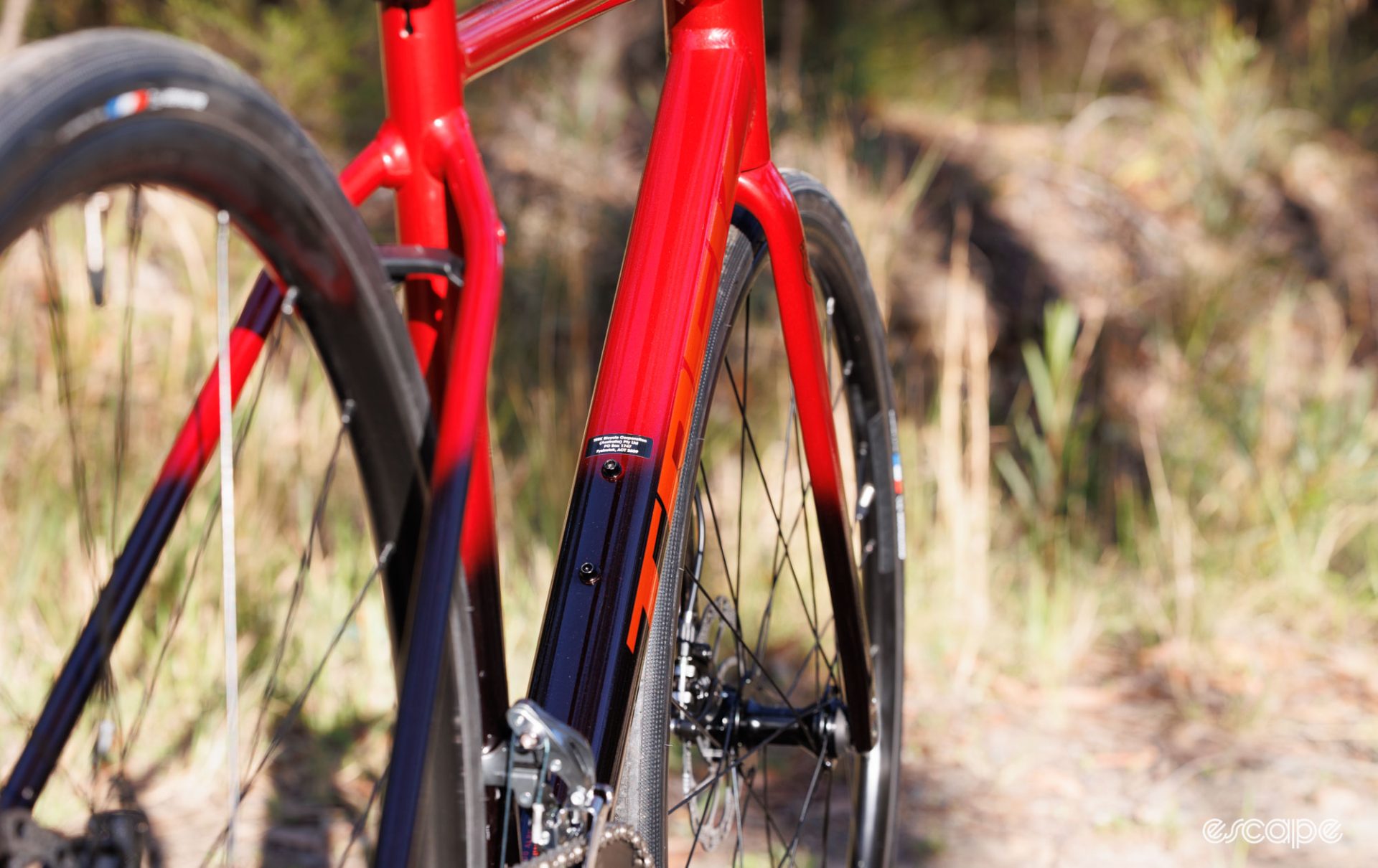
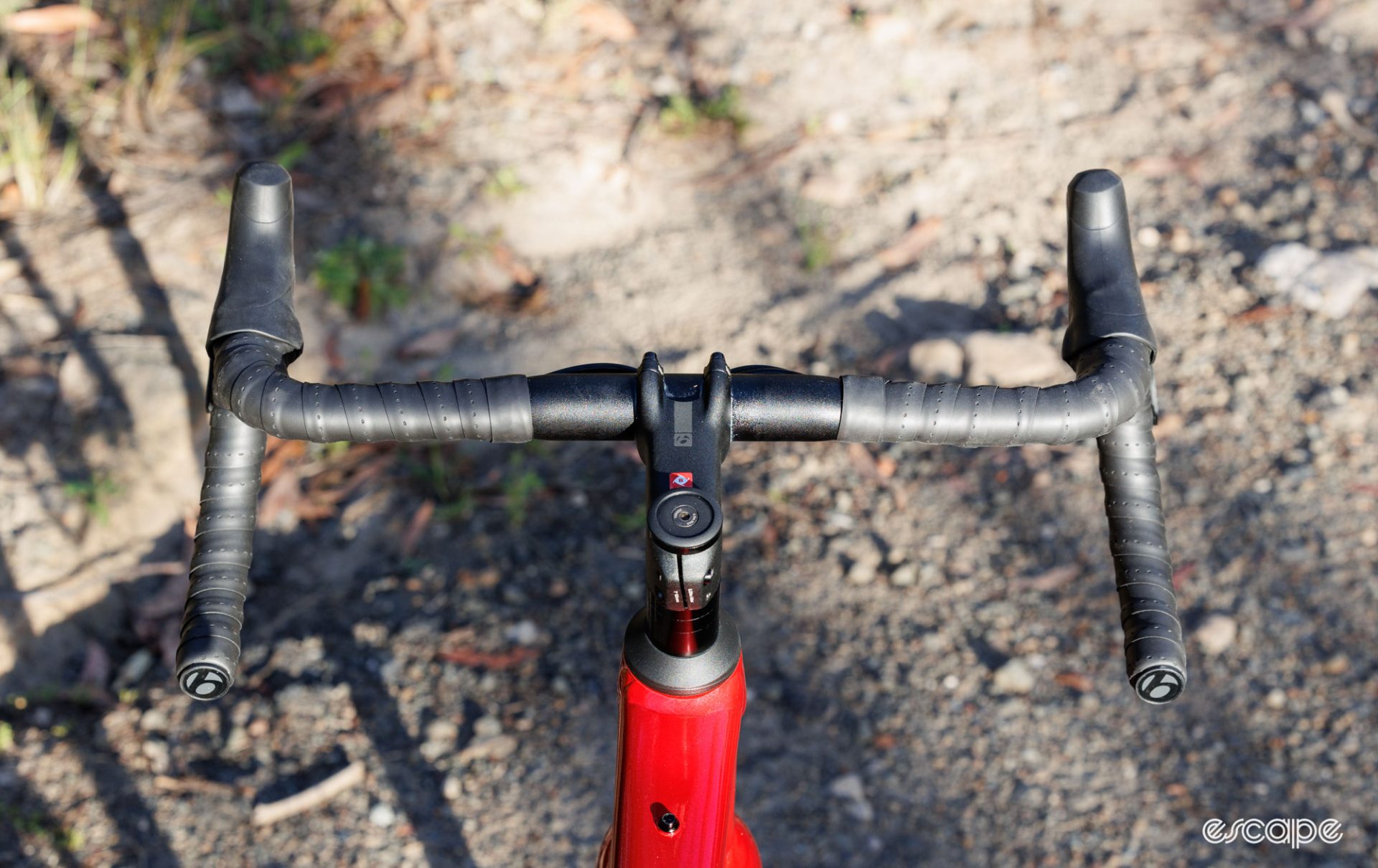
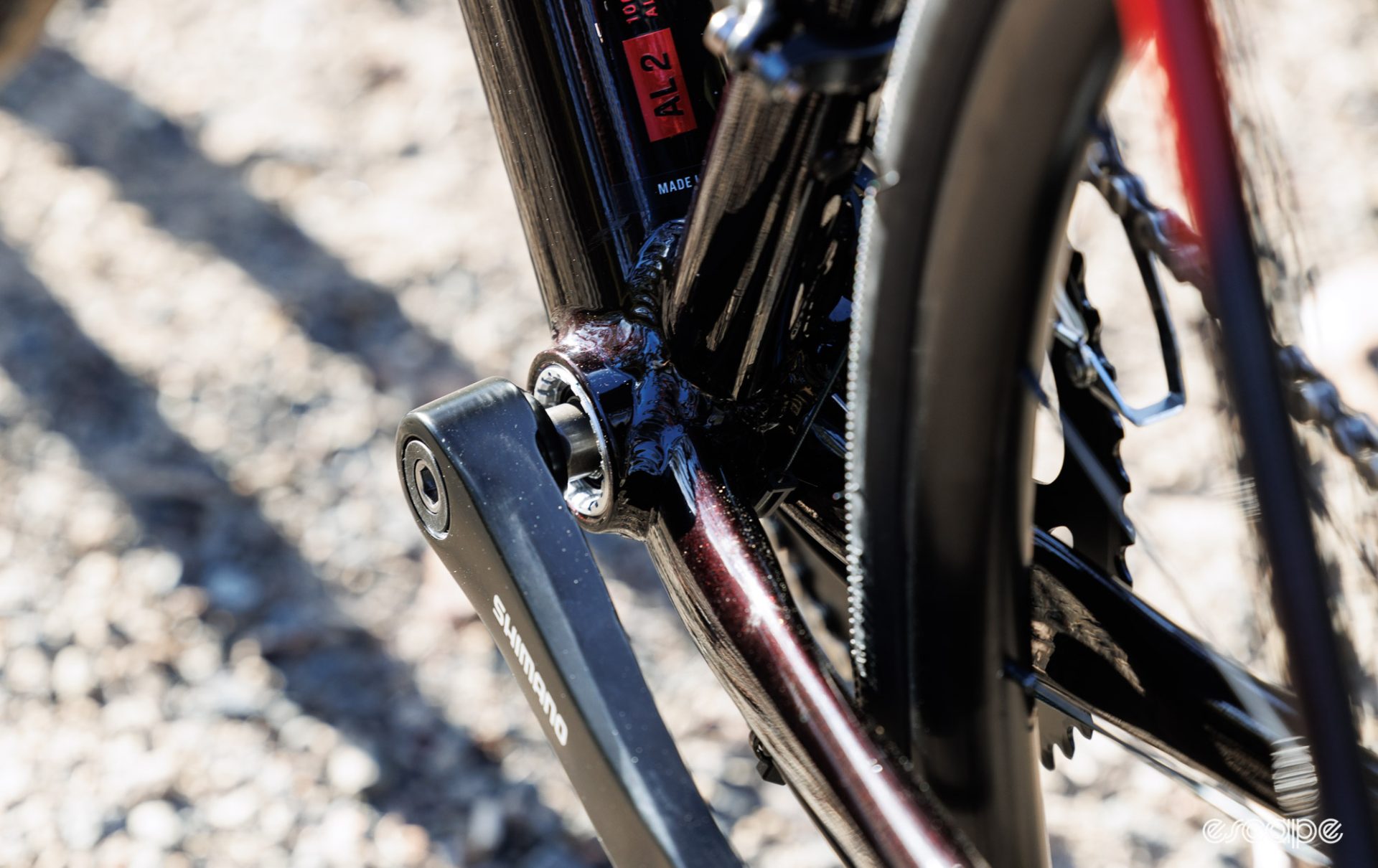

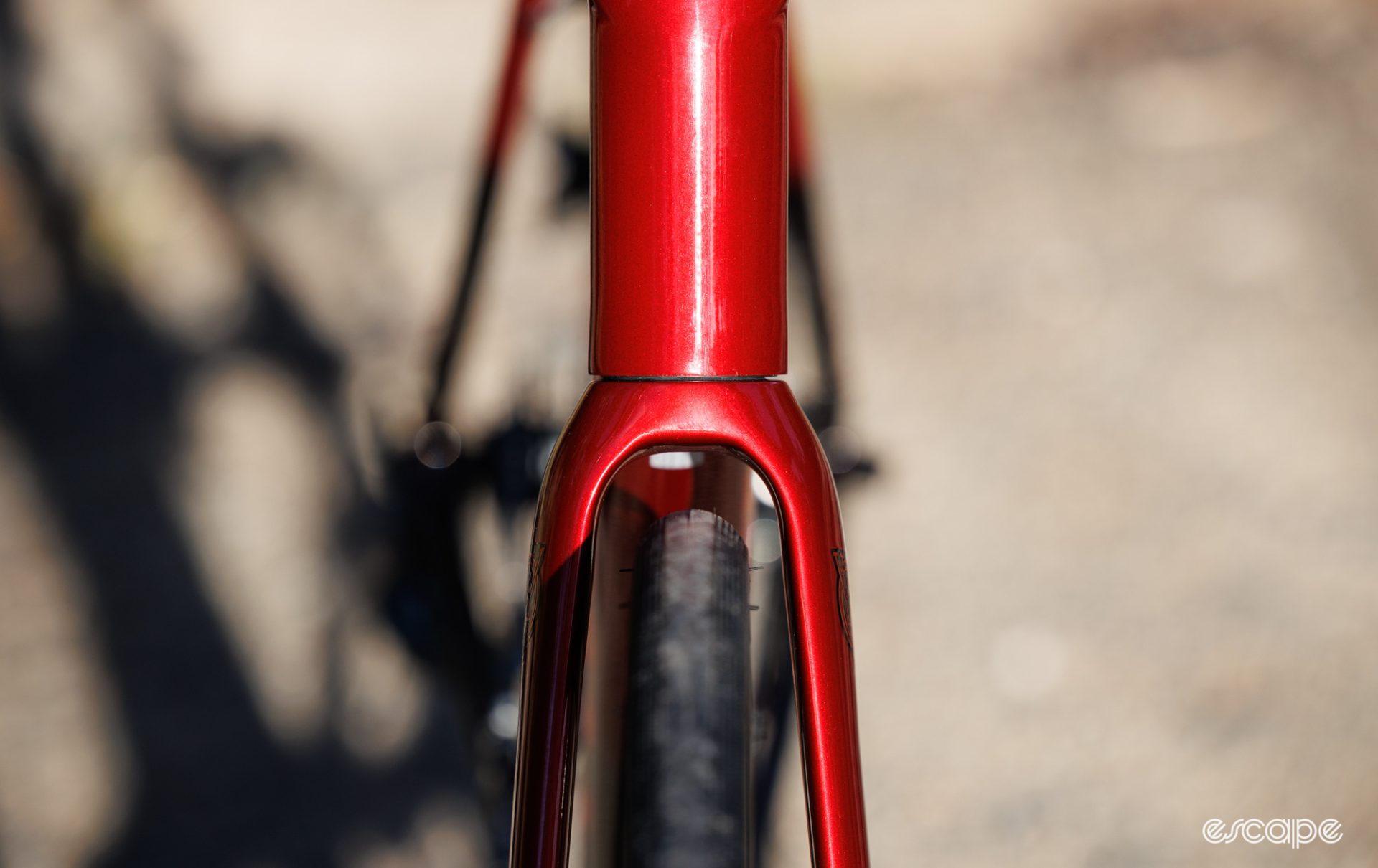
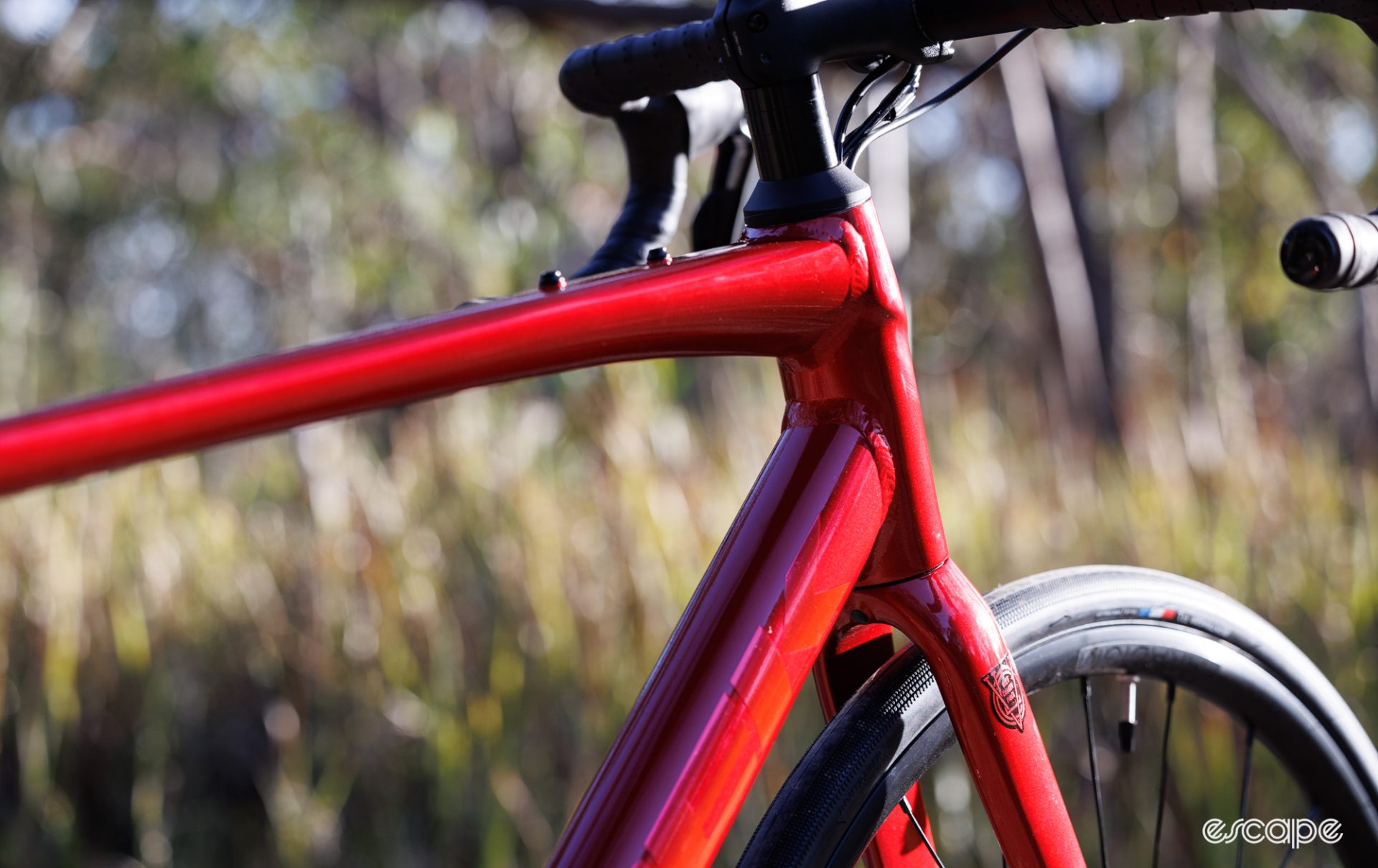

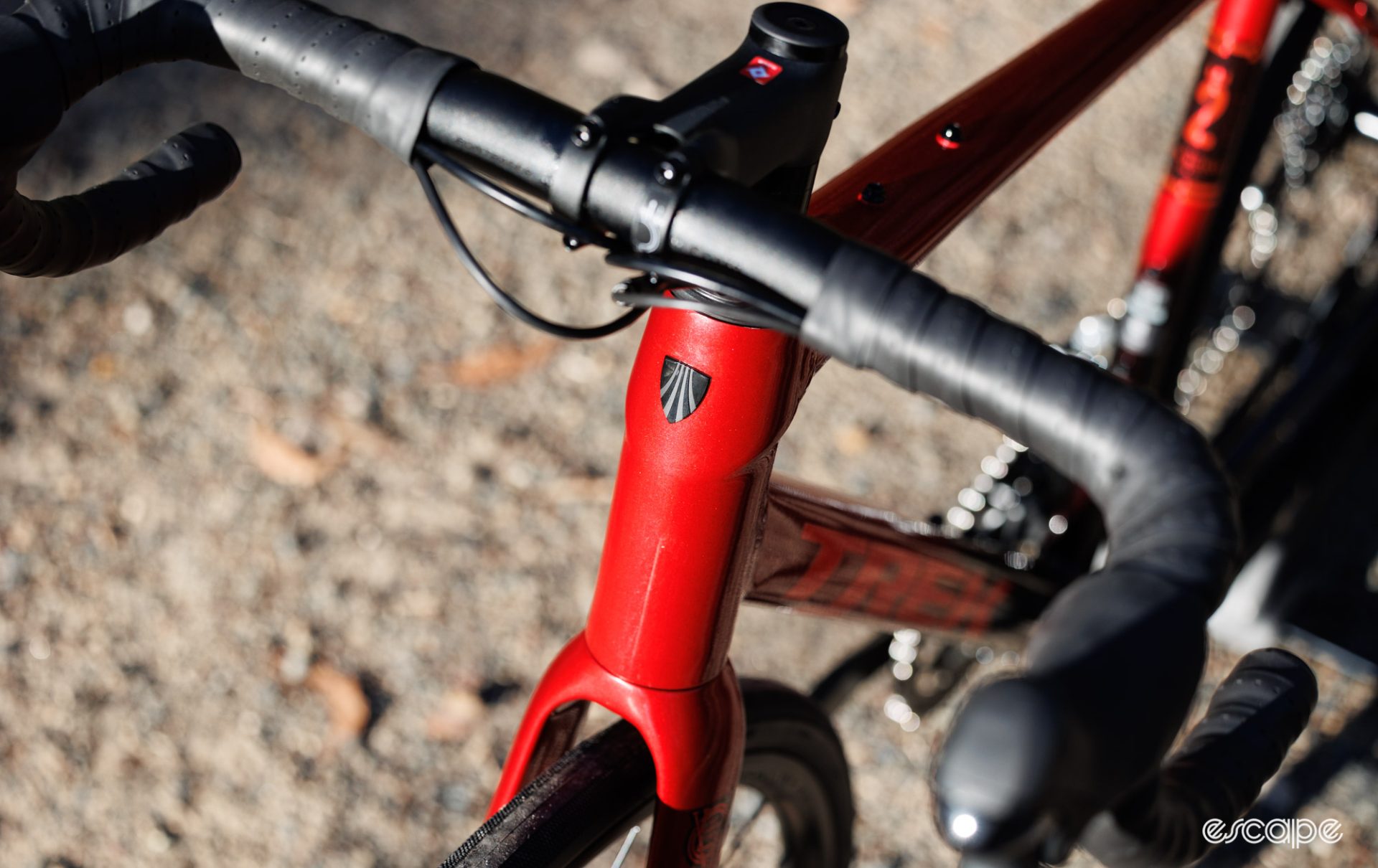
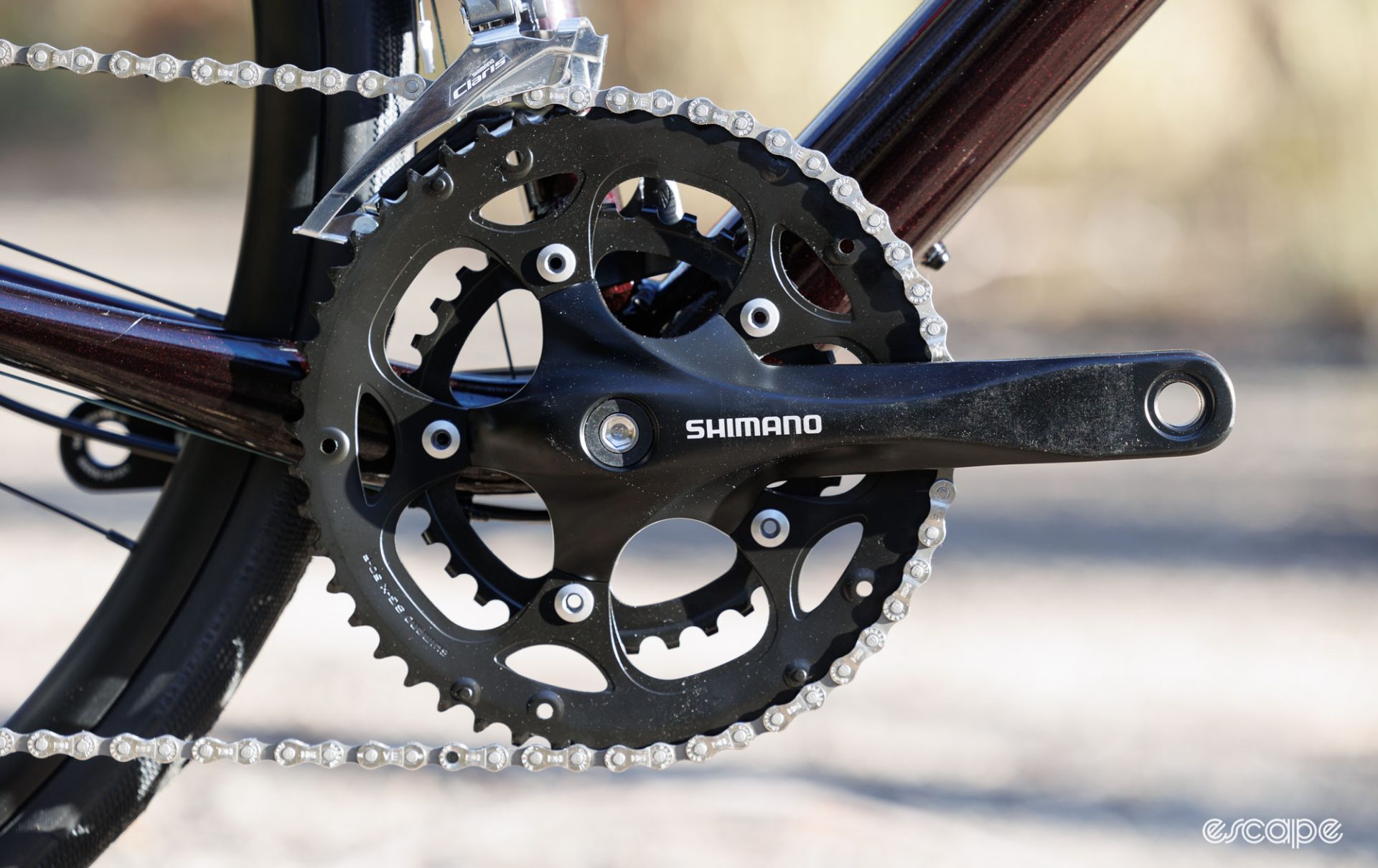
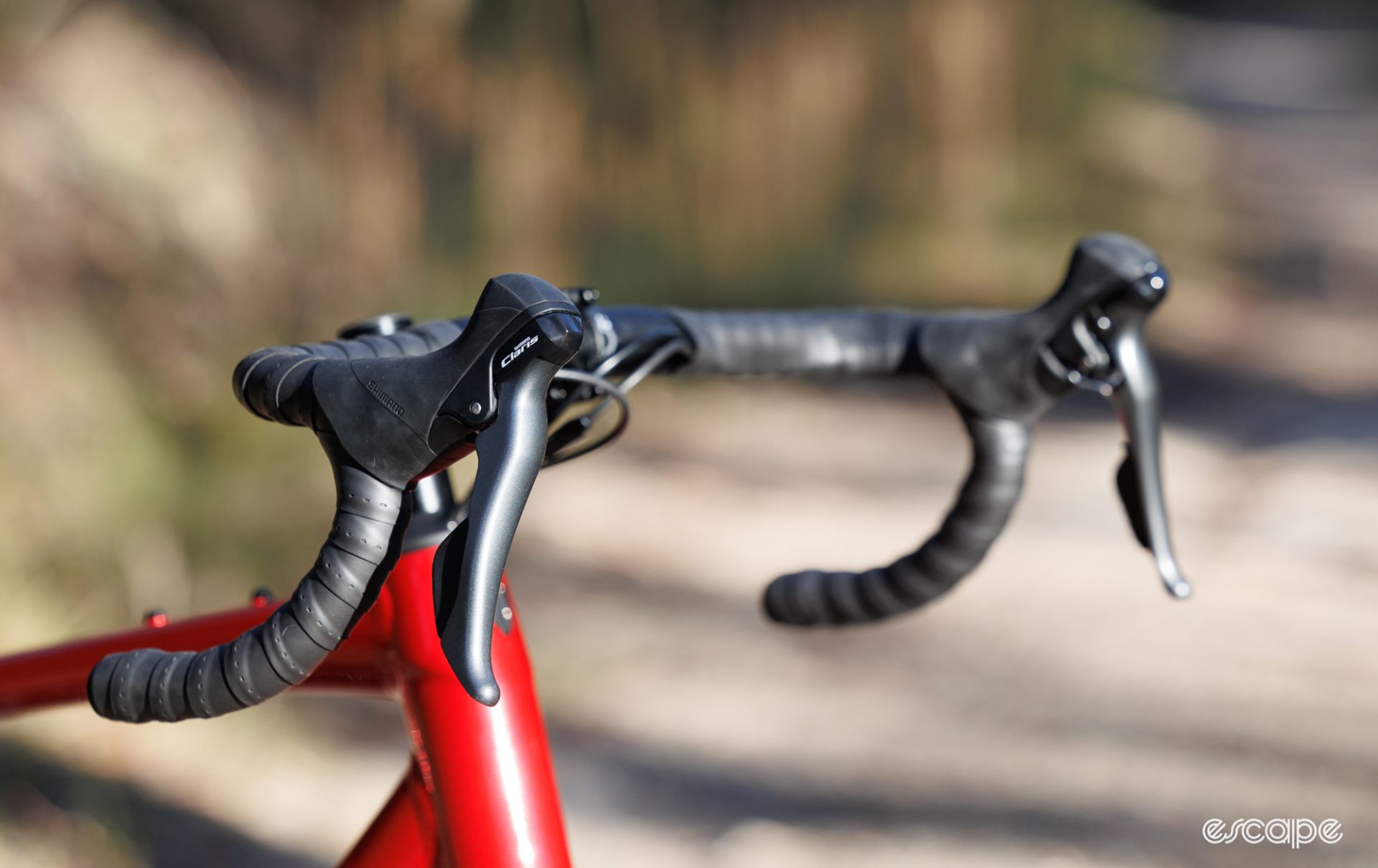
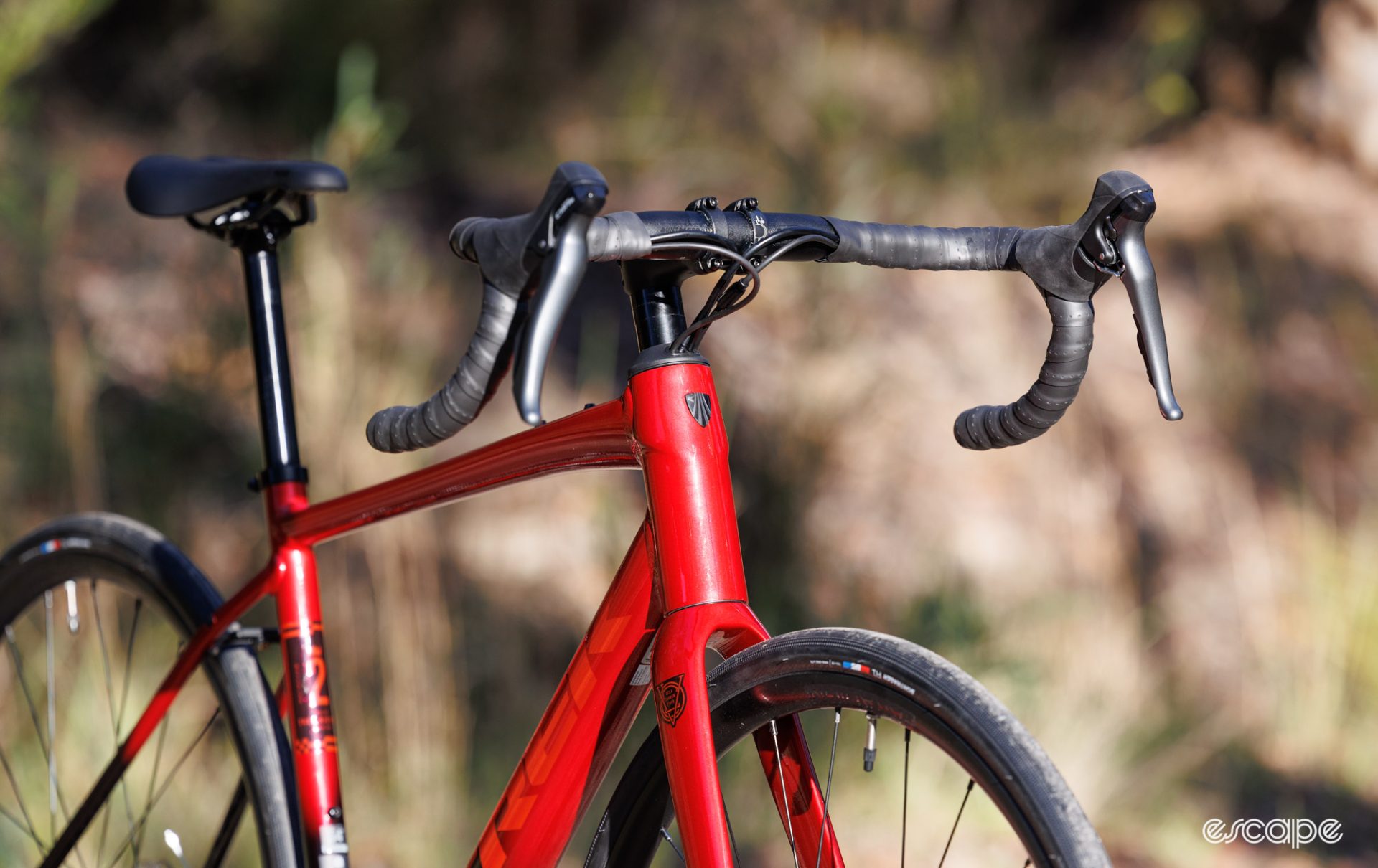
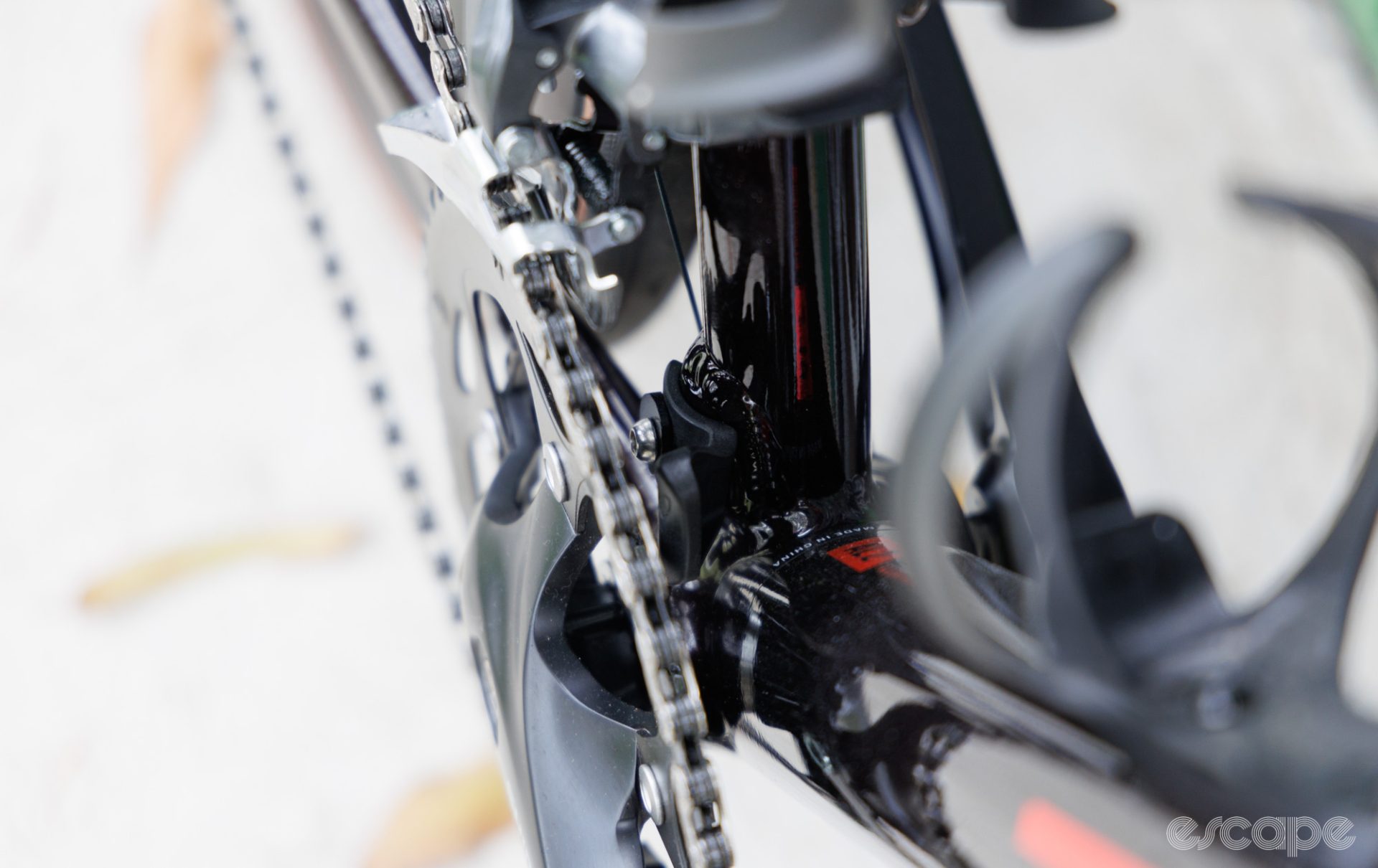
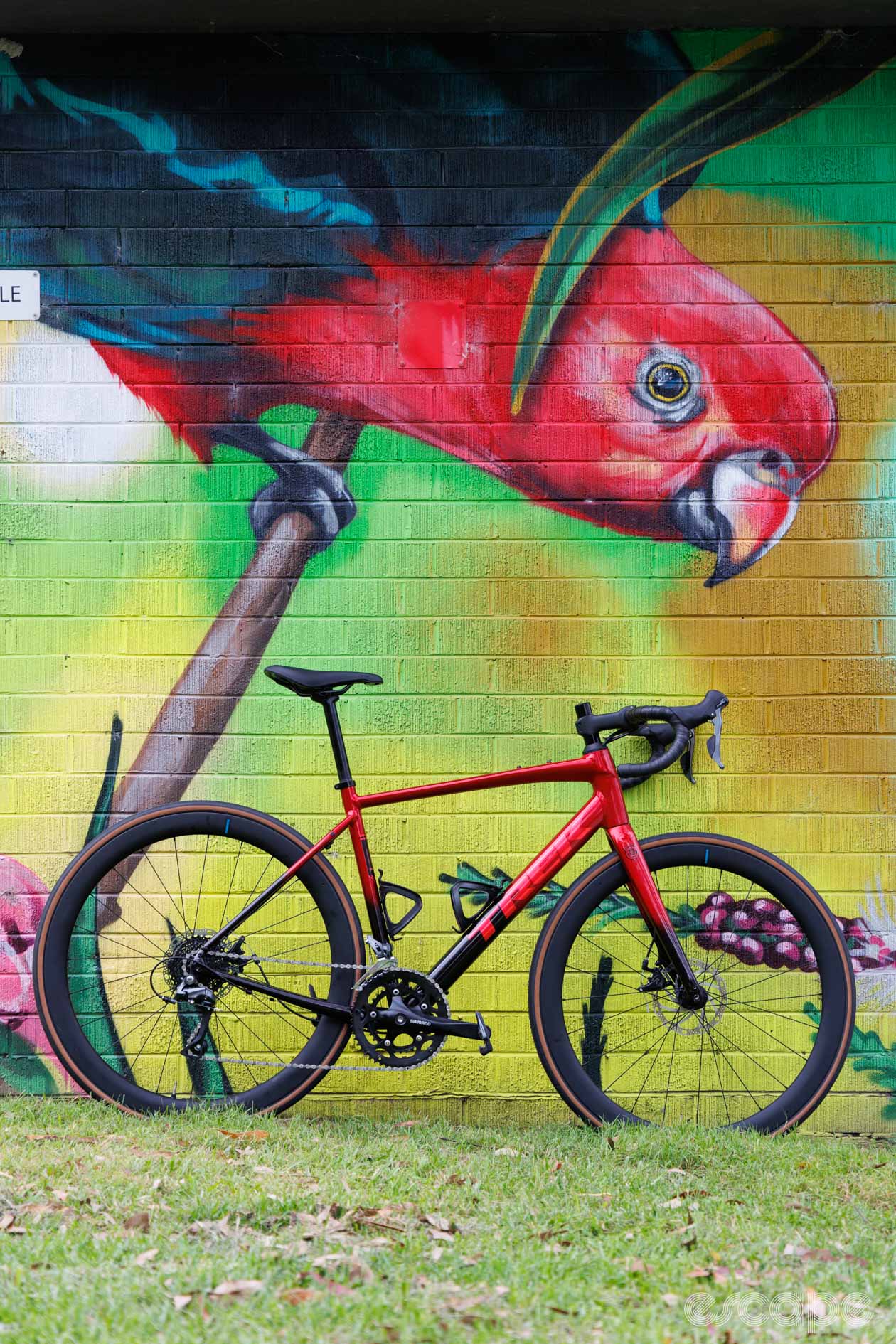
Did we do a good job with this story?

